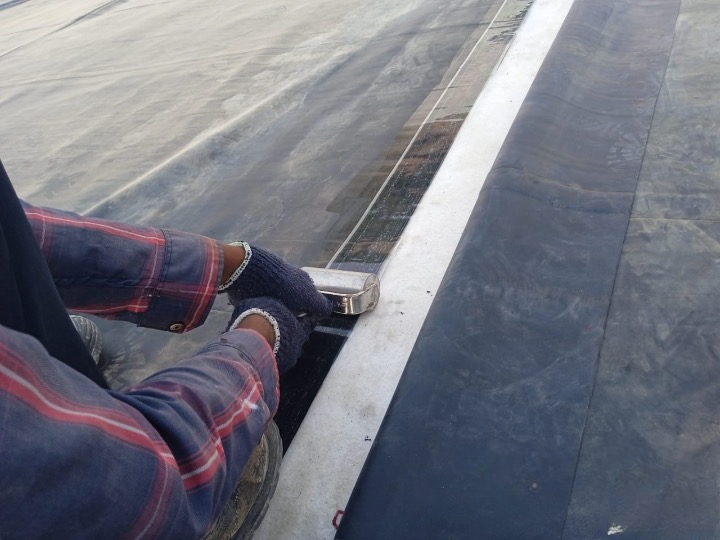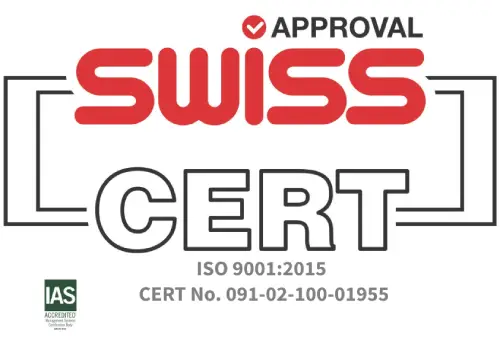2025

Rubber Waterproofing: A Smart Alternative to Bitumen for Extreme Weather Zones
When it comes to protecting buildings in extreme weather conditions, bitumen-based waterproofing has traditionally been the go-to solution. However, a smarter, more durable alternative is gaining ground: rubber waterproofing. Based on synthetic rubber membranes like EPDM and butyl, this modern system offers greater flexibility, longevity, environmental friendliness, and resistance to harsh climates—making it an ideal upgrade in demanding environments.
What is Rubber Waterproofing?
Rubber waterproofing uses flexible synthetic membranes – most commonly EPDM (Ethylene Propylene Diene Monomer) – to create a seamless, watertight barrier. These membranes are specially engineered to resist water penetration, UV rays, ozone, and extreme temperature fluctuations.
Unlike bitumen, which is petroleum-based and becomes brittle with age and exposure, rubber membranes remain elastic and resilient even under intense thermal or environmental stress.
Why Rubber Waterproofing Excels in Extreme Climates
EPDM and other rubber membranes have been specifically designed for harsh weather conditions. Here’s why rubber waterproofing stands out when compared to bitumen:
1. Exceptional Temperature Resistance
Rubber membranes like EPDM perform reliably in extreme temperatures – from as low as -40°F to as high as 300°F. Whether its freezing winters or scorching summers, the membrane stays intact without cracking or melting.
2. Superior Flexibility and Elasticity
EPDM can stretch up to 300% of its original length, allowing it to move with a building’s natural expansion and contraction. Bitumen lacks this flexibility and tends to crack over time, especially in cold weather.
3. High UV and Ozone Resistance
Unlike bitumen, which degrades quickly under UV exposure, EPDM is inherently resistant to UV and ozone damage – ensuring longer performance even under direct sunlight.
4. Long-Term Durability
With proper installation, EPDM rubber waterproofing can last 25 to 30 years or more, often with minimal maintenance. In contrast, bitumen systems typically require repairs or replacement every 10 to 15 years.
5. Environmentally Friendly and Safer Installation
Rubber membranes are cold-applied, avoiding the fire hazards of traditional torch-on bitumen. Many EPDM products are recyclable and non-toxic, aligning with modern sustainable construction practices.
Real-World Applications of Rubber Waterproofing
Rubber waterproofing has been successfully adopted in a wide range of settings, particularly in areas exposed to extreme environmental stress:
- Desert Regions: In hot, arid climates like the Middle East or North India, EPDM membranes provide long-lasting UV protection and heat resistance.
- Cold and Snowy Areas: In regions prone to freeze-thaw cycles (such as Northern Europe or Canada), rubber membranes prevent cracking and water seepage caused by ice expansion.
- Coastal Zones: EPDM offers excellent resistance to salt-laden air and humidity, which can corrode other materials.
- Green Roofs & Industrial Spaces: EPDM’s chemical resistance and durability under heavy loads make it a popular choice in eco-friendly and industrial construction projects.
Rubber Waterproofing vs. Bitumen: A Quick Comparison
Feature | Rubber Waterproofing (EPDM) | Bitumen-Based Systems |
Temperature Tolerance | -40°F to 300°F | -10°F to 180°F |
Elasticity | High (200–300%) | Low |
Flexibility | Excellent | Poor |
Durability | 25–50 years | 10–15 years |
UV Resistance | High | Low |
Eco-Friendliness | Recyclable, non-toxic | Petroleum-based |
Installation | Cold-applied, safe | Requires heating/torching |
Seam Coverage | Seamless options | Multiple seams prone to leaks |
Maintenance | Minimal | Frequent patching needed |
Weight | Lightweight | Heavy, adds structural load |
Weather Resistance | Excellent | Moderate |
Choosing the Right Rubber Waterproofing System
When selecting a rubber waterproofing solution, keep the following in mind:
- EPDM Quality: Opt for membranes that come with weathering and performance certifications.
- Membrane Thickness: Ranges from 1 mm to 2.5 mm thicker membranes provide better protection.
- Reinforced vs. Non-Reinforced: Choose reinforced membranes for areas with heavy foot traffic.
- Support & Accessories: Work with manufacturers that provide proper guidance and a full range of application tools.
Polygomma’s EPDM rubber waterproofing membrane is one well-known example, widely trusted for both residential and commercial projects in extreme environments. It’s designed with long-term durability and eco-safety in mind.
Why Rubber Waterproofing Is the Future
As global climates become more unpredictable, traditional waterproofing systems often fall short. Rubber waterproofing offers a future-ready solution built for resilience, sustainability, and long-term savings.
Here’s why it’s becoming the preferred choice:
- Adaptability to Climate Change: Withstanding intense heat, cold, rain, and wind, rubber membranes offer reliable protection as weather conditions grow more extreme.
- Reduced Maintenance Costs: The long lifespan and minimal upkeep requirements lower total cost of ownership.
- Sustainable Building Practices: EPDM is recyclable and often manufactured with fewer harmful chemicals, supporting green construction efforts.
- Safety and Efficiency: Cold-applied systems eliminate the risks associated with fire and toxic emissions during installation.
- Versatility in Applications: From flat rooftops to sloped surfaces, basements to green roofs—rubber membranes can handle it all with ease.
Frequently Asked Questions
- Can rubber waterproofing be applied to existing roofs?
Yes, in many cases rubber membranes can be installed over existing roofs, depending on the condition and material compatibility. - Does rubber waterproofing require frequent maintenance?
No. Its resistance to weather, fungus, and chemicals means that only basic periodic checks and cleaning are needed. - Is it suitable for flood-prone or high rainfall areas?
Absolutely. Rubber waterproofing is non-porous and flexible, maintaining a watertight seal even under prolonged water exposure. - Can it be used on sloped roofs?
Yes. With proper installation and edge detailing, rubber membranes work well on flat and low-sloped roofs alike. - Does it need special tools or training to install?
No. Most systems are cold-applied using basic tools like rollers, brushes, adhesive, and seam tape—no open flames or complex machinery required. - Will it crack in freezing temperatures like bitumen?
No. EPDM remains flexible in sub-zero temperatures, unlike bitumen which becomes brittle and prone to cracking. - Is rubber waterproofing fire-resistant?
Yes. Many EPDM membranes meet fire-resistance standards and are safer to install than torch-applied bitumen systems.

